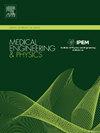Four-dimensional flow magnetic resonance imaging assessment of left ventricular hemodynamics in transplanted hearts with good postoperative course
IF 2.3
4区 医学
Q3 ENGINEERING, BIOMEDICAL
引用次数: 0
Abstract
Heart transplantation (HTx) is an established treatment for patients with advanced heart failure, although postoperative rejection responses hamper favorable long-term treatment outcomes. Medical imaging is a non-invasive diagnostic modality that can provide attractive insights into cardiac physiology for HTx, including morphological characteristics and cardiac hemodynamics. This study aimed to achieve a basic understanding of left ventricular (LV) hemodynamics in patients with good treatment outcomes following HTx. Specifically, four-dimensional magnetic resonance imaging was performed on 10 patients with a good postoperative course following HTx and 24 controls without a prior history of heart diseases nor HTx. LV hemodynamics were evaluated from the LV flow kinetic energy. We found that LV volumetric functions and kinetic energy ranges were not significantly different between the HTx and control groups, supporting good efficacy of HTx. Nevertheless, a temporal increase in the kinetic energy in late diastole owing to atrial contraction was present in the control group but absent in the HTx group except for one HTx patient. These findings raise the need of further evaluation of cardiac hemodynamics and the pathophysiology of HTx patients even within normal ranges of volumetric and flow transport functions.
术后良好移植心脏左室血流动力学的四维磁共振成像评价
心脏移植(HTx)是晚期心力衰竭患者的既定治疗方法,尽管术后排斥反应阻碍了良好的长期治疗结果。医学成像是一种非侵入性的诊断方式,可以为HTx的心脏生理学提供有吸引力的见解,包括形态学特征和心脏血流动力学。本研究旨在对HTx术后治疗效果良好的患者的左室血流动力学有一个基本的了解。具体而言,对10例HTx术后病程良好的患者和24例没有心脏病史或HTx的对照组进行了四维磁共振成像。从左室血流动能评价左室血流动力学。我们发现HTx与对照组的左心室容积功能和动能范围无显著差异,支持HTx的良好疗效。然而,在对照组中,由于心房收缩导致的舒张后期动能暂时增加,而在HTx组中,除了一名HTx患者外,没有出现这种情况。这些发现提出了进一步评估HTx患者心脏血流动力学和病理生理学的必要性,即使在正常的容量和血流运输功能范围内。
本文章由计算机程序翻译,如有差异,请以英文原文为准。
求助全文
约1分钟内获得全文
求助全文
来源期刊

Medical Engineering & Physics
工程技术-工程:生物医学
CiteScore
4.30
自引率
4.50%
发文量
172
审稿时长
3.0 months
期刊介绍:
Medical Engineering & Physics provides a forum for the publication of the latest developments in biomedical engineering, and reflects the essential multidisciplinary nature of the subject. The journal publishes in-depth critical reviews, scientific papers and technical notes. Our focus encompasses the application of the basic principles of physics and engineering to the development of medical devices and technology, with the ultimate aim of producing improvements in the quality of health care.Topics covered include biomechanics, biomaterials, mechanobiology, rehabilitation engineering, biomedical signal processing and medical device development. Medical Engineering & Physics aims to keep both engineers and clinicians abreast of the latest applications of technology to health care.
 求助内容:
求助内容: 应助结果提醒方式:
应助结果提醒方式:


